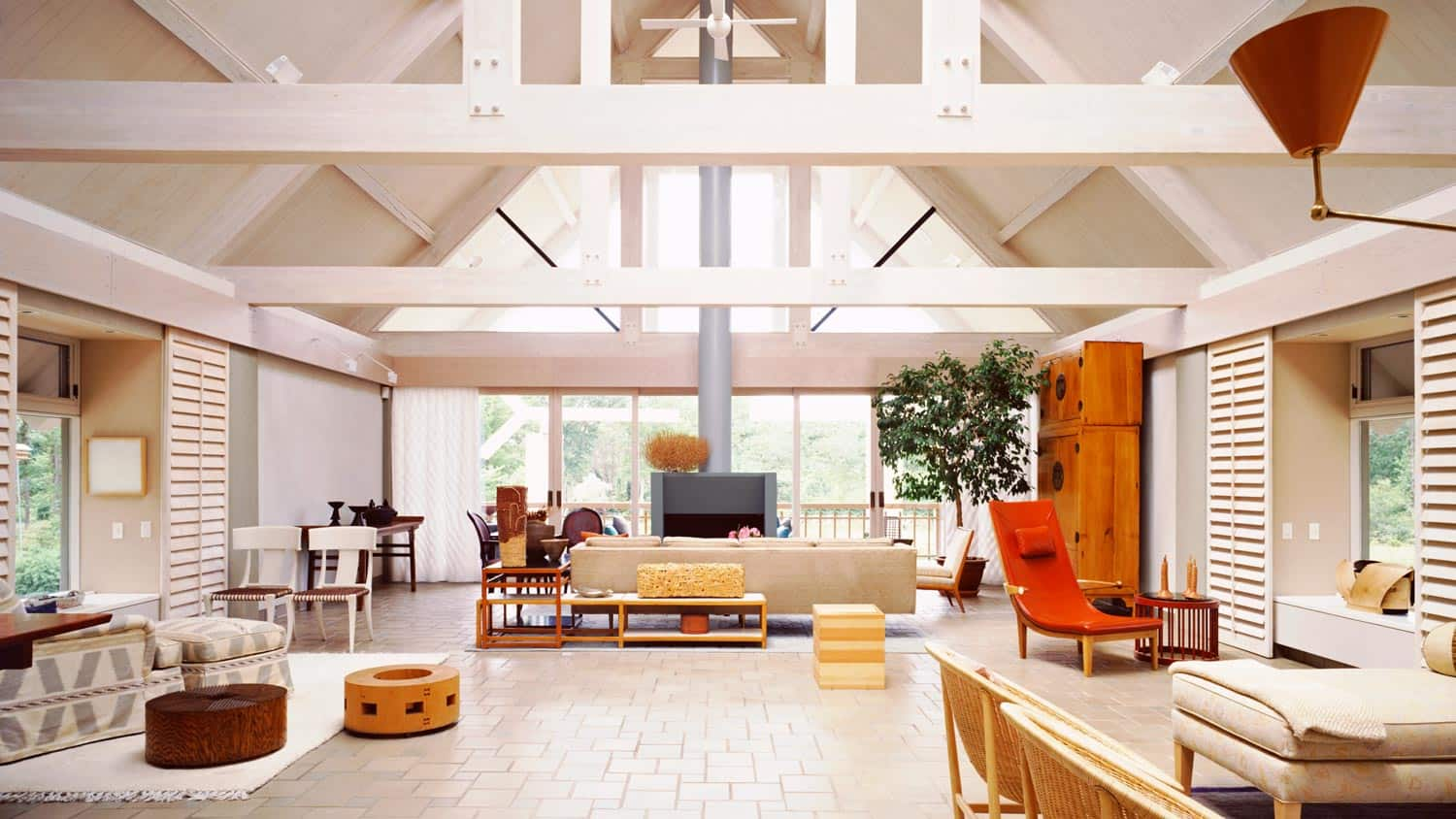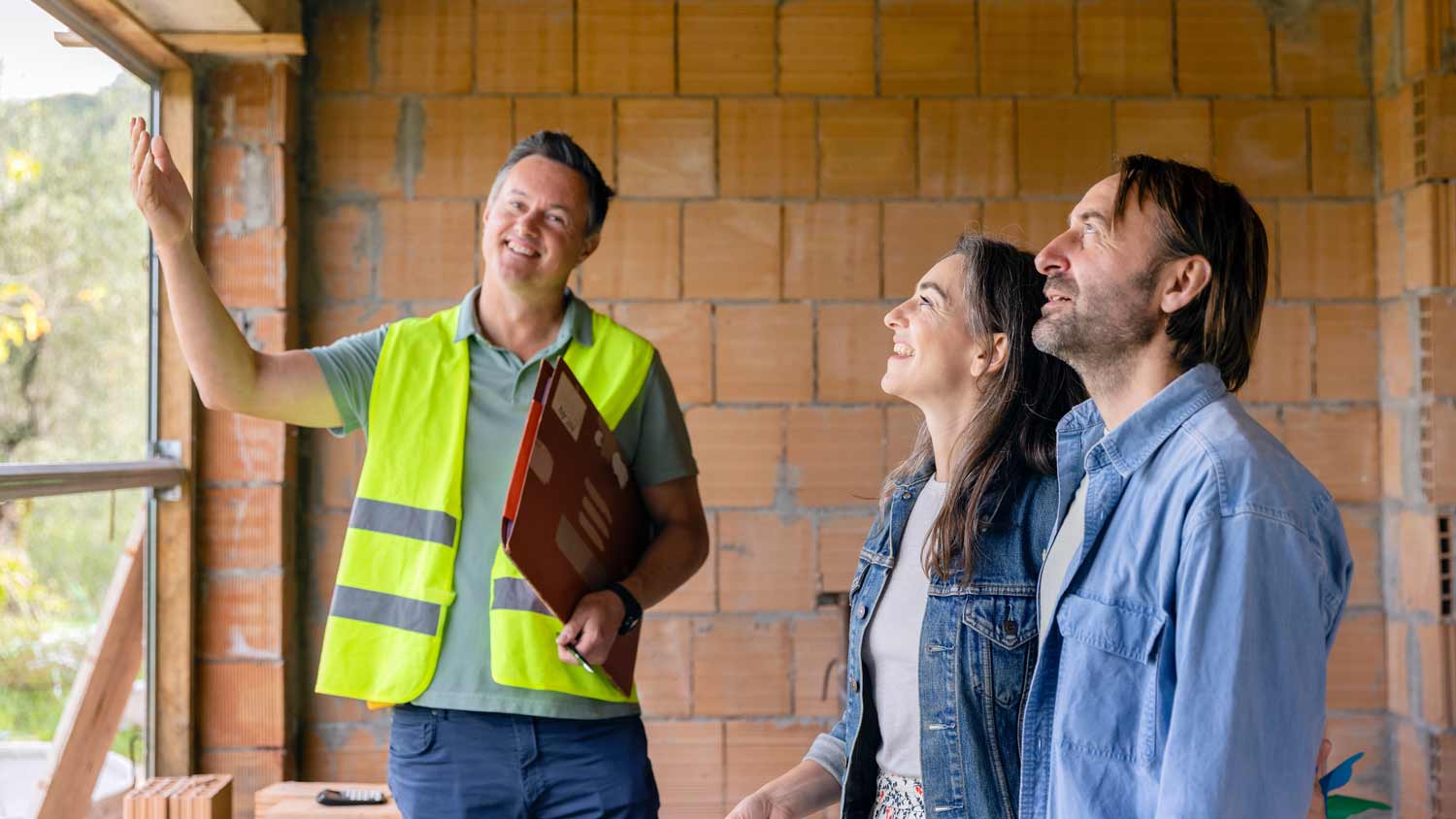
Dreaming of building your own home from the ground up? Learn how much it costs to build a house yourself and if it’s worth it to skip the pro on this project.
On average, building a timber frame house costs between $300,000 to $800,000 depending primarily on your location and the design.


A timber frame home cuts a uniquely grand figure, characterized by thick, handcrafted beams soaring high to ceilings above spacious, open plan flooring. Building a timber frame home usually costs more than one that is stick built. Based on an average 2,000 square foot home, you can expect to pay between $300,000 and $800,000 for a timber frame home.
Based on construction techniques stretching back millennia, timber frame homes are supported by the large posts and beams that form its outer frame. In the more traditional style, each piece of timber is milled for a particular floor plan, with pieces fitting together through mortise and tenon joinery (featuring a wooden peg on one timber that slots perfectly into a precut joint on the other). But there are more modern approaches, as well as hybrid construction models, that include the usual array of nails, bolts, and plates.
Due to the precision required in their construction—and the varying requirements of different lot types—nearly all timber frame homes are custom-built, and thus present a wide range of potential costs. Depending on the design and type of wood used, building a timber frame home will range in cost from $150 to $400 per square foot. Eastern wood pine is the most basic, inexpensive wood choice; other types of timber—Douglas Fir, Red Cedar, and Oak are popular choices—will likely cost you more.
Be careful here, though: while price-per-square-foot provides the most concrete basis available for a general cost estimate, it is less reliable for timber frame compared to conventionally built homes. If you’re aiming for a living room with the kind of roomy, vaulted, cathedral ceilings that many associate with this style of design, you’ll also have to factor in the overall volume of space—or, at this early stage, assume you’ll end up closer to the higher end of the average range.
The price per square foot on a timber frame home is also highly influenced by the degree to which you’ll be outsourcing the work. Those opting for a full, turnkey package that covers everything from design to construction should expect to pay from $200 to $250 per square foot for a fairly simple design using mid-range materials. Those planning to use existing plans and doing some of the work themselves would be looking at a range from $150 to $175 per square foot for a comparable home.
Whatever the size or complexity of the design, a timber frame home will cost 20% more on average than a similar stick-built home.
Region: The cost of hiring a local custom home builder varies by region. It is more expensive to build a timber frame home in the Northeast than it is in the South. The cost out West varies, with California on par with the Northeast, but Oregon and Washington are closer to the average pricing.
State: Major states such as New York, California, Texas, Alaska, and Hawaii cost 9% to 23% higher than the national average, with Hawaii being the most expensive state to build in.
Rural vs. Urban: The terrain is the most important consideration here. If your plot is on a slope or side of a mountain, your costs will be higher as you’ll need to pay for deeper foundations, grading, or retaining walls to secure the frame. If your plot lacks basic utility connections (sewage, water, electricity), you will also need to set those up and factor in that cost as well.

It’s the striking appearance that typically first draws people to timber frame homes: Mixing a rustic feel with sophisticated design, timber frame homes achieve an effect that is at once stately and cozy and a timeless quality suited to any number of different environments. Because they are supported entirely by exterior beams, timber frame homes require no load-bearing walls inside and offer a highly variable range of options for the interior floor plan, allowing many owners to opt for an open floor plan or to make use of modular walls.
With materials typically built to a custom plan and then factory assembled and then disassembled to be rebuilt on-site, timber frame homes are also a great option for those looking to cut down on construction time and save on labor costs.
Engineered according to venerable principles, timber frame homes are highly sturdy—remaining structurally sound with very little upkeep required of the owner. On average, they remain habitable two-to-three times longer than houses built by more modern methods, making it an ideal choice for those who wish to build a home that can be handed down for many generations.
Home builders also choose timber framing for its energy efficiency, as these homes can maintain consistent temperatures with less energy use than many other types of builds—especially today, when most of them are built with structural insulated panels (SIPs).
The main factor that determines the cost of your timber frame home is square footage, but there are also a variety of design choices to consider that can lower your overall cost.

The amount of timber framing you use in your design—known as the density of the project—will greatly impact the price. A hybrid timber frame uses post and beam construction in the main home areas, such as the living room and dining room, but cuts down on costs by forgoing the post and beam in spaces such as bedrooms and bathrooms.
The finishes refer to everything from the flooring to the appliances to external home materials. Whether you choose to opt for basic finishes or luxury options will affect your final price.
Complex roof lines that involve more than one main ridge will be more expensive. A vaulted ceiling is dramatic, but you can create the same effect with straight, tall, 12-foot ceilings.
If there are two homes, each 2,000 square feet, but one has 10 square corners and the other has 20, the one with more square corners will cost more. A basic rectangular design will be the most affordable way to build a timber frame home.
A straight staircase is more affordable to build than a curved one, and smaller, numerous windows will cost less to install than a large, floor-to-ceiling option.
The erection of a sturdy timber frame home requires precision from the outset, since the wood must be milled according to a plan; this is why every timber frame home will be either custom-crafted or totally prefabricated. The frame will likely be assembled in a factory to make sure the structure will hold, and then disassembled and sent to you in parts. So whether you’re buying a materials kit or commissioning a fully custom turnkey package, you will be outsourcing some portion of the work to a timber frame supplier and also possibly hiring a local home building contractor, architect, and/or designer.
Constructing a timber frame home is a real challenge, even for those with experience in other kinds of home building. One of the most vexing requirements presents itself early on: timber frame homes are fitted together on-site and then raised—requiring either use of a crane or a large group of strong people to go at it in the classic Seven Brides for Seven Brothers style.
For those who welcome a complex project, however, there are timber frame suppliers that offer different more-or-less DIY options—whether you intend to join every beam yourself, along with family and friends, or to function in a more supervisory, general contractor-like role while leaving more specialized tasks to the experts. Homeowners taking one of these routes can expect to save $10 to $15 per square foot compared to a turnkey package.
From average costs to expert advice, get all the answers you need to get your job done.

Dreaming of building your own home from the ground up? Learn how much it costs to build a house yourself and if it’s worth it to skip the pro on this project.

Get transparent shed repair cost info so you can learn average prices, cost factors, and ways to save on shed repairs for your home.
The average cost of a yurt is $35,000, but the price can vary depending on the size, building materials, and number of add-on features.

Barndominiums combine the comforts of home with rural living. Compare the pros and cons of barndominium homes to see if one is right for you.

Ready to start remodeling your home but not sure what terms your pro should include in your home renovation contract? Find out here.

Planning and construction takes longer when you don’t follow pre-set plans. Learn how long it takes to build a custom home so that you know what to expect.